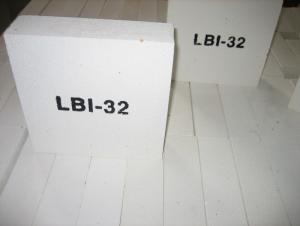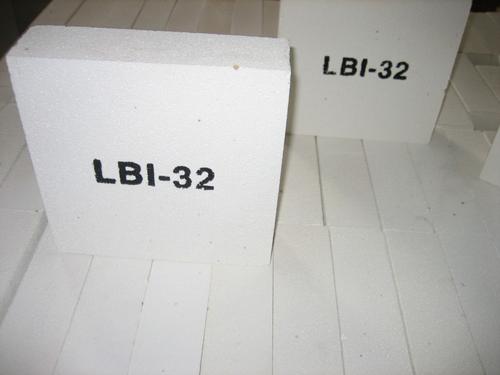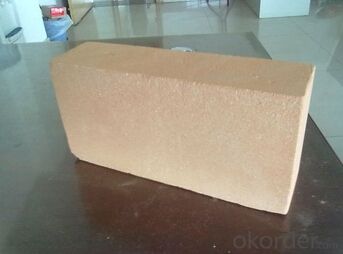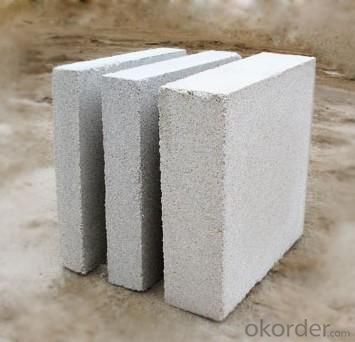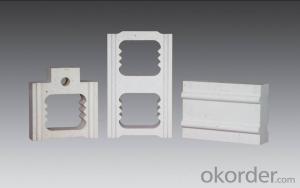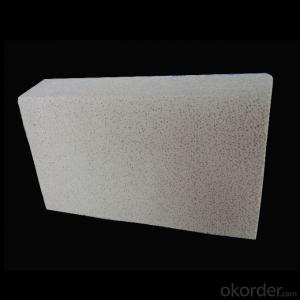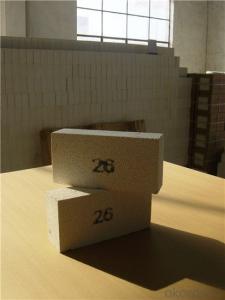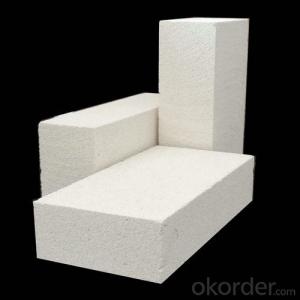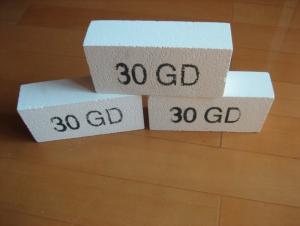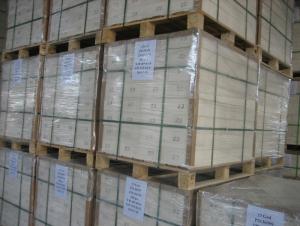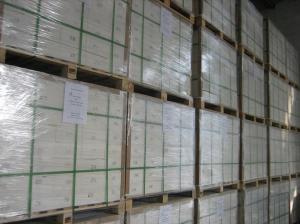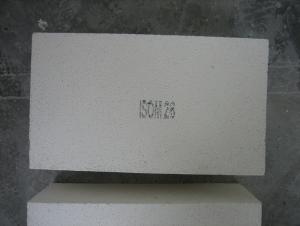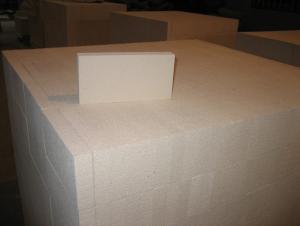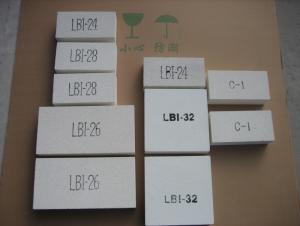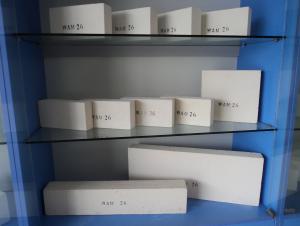Insulating Fire Brick - Refractory Mullite Insulating Refractory Brick JM 28
- Loading Port:
- Shanghai
- Payment Terms:
- TT OR LC
- Min Order Qty:
- 20 m.t.
- Supply Capability:
- 20 m.t./month
OKorder Service Pledge
OKorder Financial Service
You Might Also Like
General Information
CMAX insulating firebricks are classified under temperature between 1300℃ to 1700℃, manufactured from high purity alumina clay.
1. Lower content of iron, alkaline and impurities, good high temperature properties.
2. Homogeneous structure, light weight, energy saving because lower heat storage in the furnace during cooling cycles.
3. High strength, good thermal shock resistance under high temperature.
4. Precise sizes due to grinding and shaping after sintering, which meets the requirement of construction.
5. Max service temp: Up to 1730C (3160F)
Feature
Light weight and low thermal conductivity
Low heat storage
Low iron and impurities
High thermal shock resistance
Application of Insulating brick
Metallurgical Industry: blast furnace, hot blast furnace, heating furnace, etc..
Petrochemical Industry: ethylene cracking furnace, hydrogen furnace, the main furnace, heating furnace, etc..
Ceramic industry: roller kiln, kiln, etc..
Glass industry: glass furnace regenerator, etc.
Carbon industry: carbon furnace, etc..
Aluminum electrolysis industry: aluminum reduction cell, etc.
Other industries: tunnel kiln, shuttle kiln, etc.
Advantages of heat insulation brick
Low thermal conductivity: many air holes will bring good thermal insulation effect, energy saving.
High crushing strength: high crushing strength, volume stability.
Low heat storage: small heat storage, absorb more heat, energy-saving effect is obvious.
Technical Data
ITEM | GJM30 | GJM28 | GJM26 | GJM23 |
Classification Temperature, ℉/℃ | 3000/1650 | 2800/1540 | 2600/1430 | 2300/1260 |
Bulk Density,g/cm³ | ≤1.0 | ≤0.9 | ≤0.8 | ≥0.5 |
Reheating Linear Change, % | ≤0.9 (1550℃,12 h) | ≤0.8 (1510℃,12 h) | ≤0.7 (1410℃,12 h) | ≤0.5 (1230℃,12 h) |
Al2O3 Content, % | ≥75 | ≥65 | ≥55 | ≥45 |
Fe2O3 Content, % | ≤0.5 | ≤0.6 | ≤0.7 | ≤1.0 |
Thermal Conductivity: | ||||
800℃, w/m.k | ≤0.39 | ≤0.37 | ≤0.35 | ≤0.18 |
1000℃, w/m.k | ≤0.43 | ≤0.41 | ≤0.39 | ≤0.20 |
1200℃, w/m.k | ≤0.48 | ≤0.46 | ≤0.43 | --- |
Insulating brick
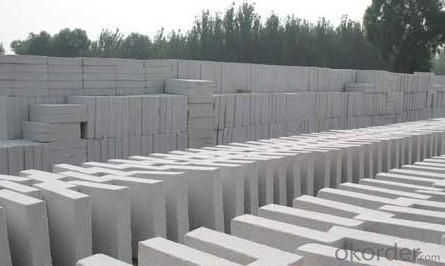
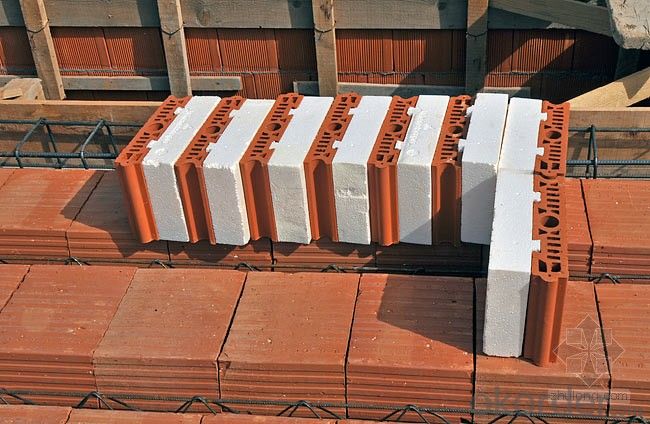
Common problem solution
1. What products do you have?
We have all kinds of refractory bricks, refractory casting materials, mortar, cement, ceramic fiber products, etc..
Or you can browse our products to choose what you need.
2. How to control product quality?
With strict quality control system throughout the material selection and production process, we have the quality of refractory materials and ceramic fiber products to meet customer requirements.
From the selection of raw materials, the quality of our control to start. The quality of the raw materials required for each batch of products in the use of the front line test. In the production process, through the quality control of workers, and then to each piece of classification, and through quality supervision and inspection.
3. Could you give me a brief introduction to the application of your product?
My Company is mainly engaged in steel, cement, glass, ceramics, petrochemical, electric power and other industries.
4. If I need you, what kind of information do you need?
In order to select the right products, we will provide us with information, such as the United States, technical data, order quantity, product applications, etc..
If you have any questions, please contact us.
- Q: Are insulating fire bricks suitable for use in the construction of lime kilns?
- Insulating fire bricks are indeed suitable for constructing lime kilns. These bricks are designed specifically to possess low thermal conductivity, enabling them to retain heat and avoid heat loss. This feature is crucial in lime kilns as they necessitate high temperatures for effectively converting limestone into lime. The utilization of insulating fire bricks facilitates the better maintenance of the kiln's generated heat, leading to enhanced energy efficiency and reduced fuel consumption. Moreover, these bricks are lightweight and convenient to handle, making them the perfect choice for lime kiln construction. All in all, insulating fire bricks are a dependable and efficient option for building lime kilns.
- Q: Are insulating fire bricks suitable for use in furnaces?
- Yes, insulating fire bricks are suitable for use in furnaces. They have excellent thermal insulation properties, high temperature resistance, and can withstand the harsh conditions inside a furnace without cracking or breaking. These bricks help to maintain consistent temperatures, reduce heat loss, and improve energy efficiency in furnaces.
- Q: Can insulating fire bricks be used in the construction of combustion chambers?
- Yes, insulating fire bricks can be used in the construction of combustion chambers. These bricks are designed to withstand high temperatures and provide excellent insulation, making them suitable for containing and directing heat in combustion processes.
- Q: Can insulating fire bricks be used in the construction of glass slump molds?
- Insulating fire bricks can indeed be utilized in the construction of glass slump molds. These bricks are composed of lightweight materials capable of enduring high temperatures, rendering them appropriate for kilns and other heat-intensive applications. When creating a glass slump mold, it is crucial to possess a material capable of withstanding the heat generated as the glass slumps and takes form. Insulating fire bricks offer the necessary insulation and heat resistance essential for this procedure. They can be cut and shaped to accommodate the desired mold design without succumbing to degradation or crumbling, even after repeated firings. As a whole, insulating fire bricks present a dependable and long-lasting choice for constructing glass slump molds.
- Q: Can insulating fire bricks be used in the construction of furnaces?
- Insulating fire bricks are indeed suitable for the construction of furnaces. These bricks possess exceptional insulation qualities, enabling them to endure high temperatures without significant heat loss. Their composition primarily consists of lightweight materials like clay, silica, and alumina. Consequently, they exhibit low thermal conductivity, allowing the furnace to retain heat efficiently while preventing excessive heating of its outer surface. As a result, these bricks are ideal for lining the walls, roof, and floor of furnaces, contributing to enhanced energy efficiency and reduced fuel consumption. Moreover, their resistance to thermal shock ensures their durability and longevity in the demanding conditions of a furnace. In conclusion, considering their exceptional insulation properties and capacity to withstand high temperatures, insulating fire bricks remain a preferred option for furnace construction.
- Q: Can insulating fire bricks be used in fireplaces?
- Yes, insulating fire bricks can be used in fireplaces. Insulating fire bricks are specifically designed to withstand high temperatures and provide excellent insulation, making them suitable for use in fireplaces. They are capable of withstanding temperatures up to 3000°F (1650°C), which is well within the operating range of most fireplaces. These bricks are made from special materials that have low thermal conductivity, allowing them to retain heat and prevent it from escaping the fireplace. This insulation property helps to improve the efficiency of the fireplace by keeping the heat inside the firebox and preventing it from dissipating into the surrounding area. Additionally, insulating fire bricks are lightweight, durable, and easy to install, making them a popular choice for fireplace construction or renovation projects.
- Q: Can insulating fire bricks be used in ceramic fiber blankets?
- No, insulating fire bricks cannot be used in ceramic fiber blankets. Insulating fire bricks are dense and solid, designed to provide insulation and withstand high temperatures in applications such as furnaces and kilns. On the other hand, ceramic fiber blankets are flexible and lightweight, made from ceramic fibers that provide excellent thermal insulation. They are commonly used as insulation in various industrial applications, including lining for furnaces, boilers, and high-temperature equipment. Mixing insulating fire bricks with ceramic fiber blankets would not be effective as these two materials have different properties and purposes.
- Q: What is the refractoriness of insulating fire bricks?
- Insulating fire bricks are known for their ability to endure high temperatures without compromising their structural integrity or experiencing significant thermal expansion. These bricks are specifically engineered to possess a high resistance to heat, which makes them well-suited for applications involving extreme temperatures, such as furnaces, kilns, and fireplaces. The refractoriness of insulating fire bricks is typically evaluated through the refractoriness under load (RUL) test. This test involves subjecting a sample brick to a predetermined temperature while applying a specific load. By observing the temperature at which the brick deforms or fails, the RUL can be determined. Insulating fire bricks are generally able to withstand temperatures ranging from 1,200 to 1,400 degrees Celsius (2,192 to 2,552 degrees Fahrenheit) due to their high refractoriness. Achieving this high refractoriness involves utilizing special materials and manufacturing techniques that create a dense and uniform structure with low thermal conductivity. The low thermal conductivity minimizes heat transfer, making these bricks effective insulators. Beyond their impressive refractoriness, insulating fire bricks also possess other desirable properties, such as excellent thermal shock resistance, minimal thermal expansion, and strong mechanical strength. These qualities make them ideal for applications where maintaining a consistent temperature and preventing heat loss are crucial. In conclusion, the refractoriness of insulating fire bricks is a crucial factor in determining their suitability for high-temperature applications. It ensures that these bricks can endure extreme heat without compromising their structural integrity or insulating capabilities.
- Q: Are insulating fire bricks suitable for use in residential fireplaces?
- Depending on the homeowner's specific requirements and preferences, insulating fire bricks can be a suitable option for residential fireplaces. These bricks are designed to have low thermal conductivity, which effectively retains heat and prevents its escape from the fireplace. Consequently, less heat is lost through the bricks, resulting in more efficient and effective heating of the room. Moreover, insulating fire bricks are lightweight and easy to handle, making them a convenient choice for homeowners who wish to install or replace bricks themselves. Additionally, they are durable and can withstand high temperatures, ensuring their longevity when exposed to the intense heat produced by the fire. Nevertheless, it is crucial to recognize that insulating fire bricks may not be ideal for everyone. Traditional fire bricks, being denser with higher thermal mass, can absorb and radiate heat for a longer duration. This attribute creates a more consistent and long-lasting heat output, which may be preferred by some homeowners. Ultimately, the decision to use insulating fire bricks in a residential fireplace should be based on the specific needs and preferences of the homeowner. Seeking guidance from a professional fireplace installer or a reputable supplier can help ensure that the chosen bricks are suitable for the intended use.
- Q: Can insulating fire bricks be used in wastewater treatment plants?
- Yes, insulating fire bricks can be used in wastewater treatment plants. Insulating fire bricks are designed to withstand high temperatures, making them suitable for use in various industrial applications, including wastewater treatment plants. They are commonly used in the construction of kilns, furnaces, and other high-temperature equipment. In wastewater treatment plants, insulating fire bricks can be used in the construction of incinerators, thermal oxidizers, and other systems that require high-temperature insulation. Their properties, such as high thermal resistance, low thermal conductivity, and excellent insulation capabilities, make them ideal for maintaining the desired temperatures in these systems while minimizing heat loss. Additionally, insulating fire bricks are resistant to chemical attacks, which is important in wastewater treatment plants where various chemicals and corrosive substances are present. Overall, the use of insulating fire bricks in wastewater treatment plants can help improve energy efficiency, reduce maintenance costs, and ensure the longevity of high-temperature equipment.
Send your message to us
Insulating Fire Brick - Refractory Mullite Insulating Refractory Brick JM 28
- Loading Port:
- Shanghai
- Payment Terms:
- TT OR LC
- Min Order Qty:
- 20 m.t.
- Supply Capability:
- 20 m.t./month
OKorder Service Pledge
OKorder Financial Service
Similar products
Hot products
Hot Searches
Related keywords
